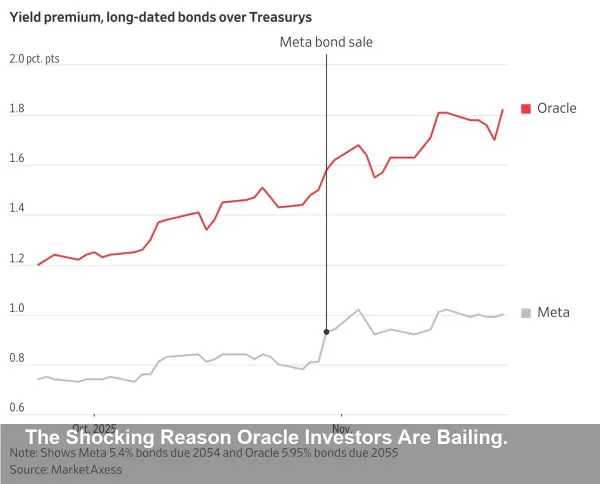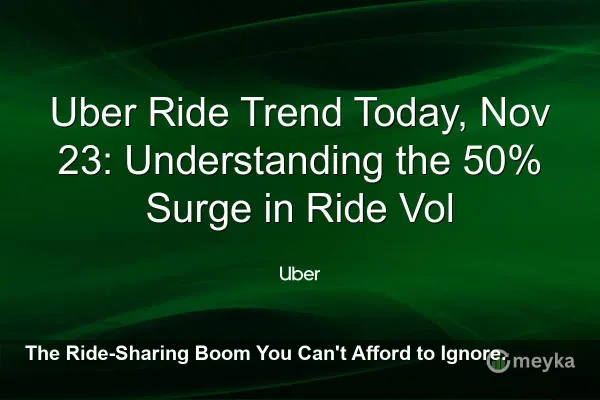Oracle’s AI Bet Sparks Massive Wall Street Sell-Off
- Oracle's stock has plummeted nearly 30% in the last month, wiping out over $250 billion in market value gains as its aggressive AI strategy spooks investors.
- The company's debt has surged to $96 billion and is projected to hit $290 billion by 2028, creating significant financial strain.
- Unlike its Big Tech rivals, Oracle is now operating with negative free cash flow and a staggering 500% debt-to-equity ratio.
- The tech giant's high-stakes pivot is almost entirely dependent on its contracts with a single customer, OpenAI, a risk highlighted by major credit rating agencies.
Oracle's AI Ambitions Trigger Investor Panic
Oracle has been hit harder than any of its Big Tech rivals in the recent market downturn, as Wall Street signals its deep unease with the company's massive bet on artificial intelligence. Shares in Larry Ellison’s software giant have plunged by almost 30% in the past month, a staggering decline that has erased more than $250 billion in market value gained since it announced its partnership with OpenAI in September.
The sell-off reflects growing concern over the speed and scale of Oracle’s pivot to AI, which involves committing hundreds of billions of dollars to chips and data centers. This all-in strategy has positioned Oracle as a key infrastructure provider for OpenAI, the creator of ChatGPT, but has left investors questioning the financial stability of the move.
A Mountain of Debt and Negative Cash Flow
At the heart of the market's anxiety is Oracle’s ballooning debt. To fund its rapid expansion, the company has aggressively tapped debt markets, pushing its long-term debt from $75 billion a year ago to approximately $96 billion today. Projections from Morgan Stanley suggest this figure could soar to an eye-watering $290 billion by 2028.
This borrowing spree has created a stark contrast with its peers. Among the five 'hyperscalers'—which include Amazon, Google, Microsoft, and Meta—Oracle is the only one with negative free cash flow. Its debt-to-equity ratio has surged to 500%, dwarfing Amazon’s 50% and Microsoft’s 30%.
Wall Street Sounds the Alarm
Financial analysts and credit rating agencies are taking notice. Barclays recently downgraded its rating of Oracle’s debt, warning that its huge AI expenses have outpaced its cash flow. Moody’s and S&P Global have also flagged significant risks, pointing to the company’s heavy reliance on a small number of AI companies, chief among them OpenAI.
S&P Global warned that by 2028, a single customer—OpenAI—could account for a third of Oracle’s revenues. “That is a huge liability and credit risk for Oracle. Your main customer, biggest customer by far, is a venture capital-funded start-up,” said Andrew Chang, a director at S&P Global. This sentiment was echoed by one short seller, who commented that Ellison “is now way off the reservation in terms of how he’s spending.”
Is the High-Stakes Gamble Worth It?
Despite the backlash, Oracle executives maintain that the rewards will justify the risks. They point to an intense and accelerating demand for AI computing power that far exceeds current supply. The deals with OpenAI are projected to generate $300 billion in revenue between 2027 and 2032, and many Wall Street analysts remain bullish on the stock. For the year, Oracle shares are still up 30%.
However, recent leadership changes and insider moves may add to investor concerns. Safra Catz, who resisted a major expansion into the cloud due to the high costs, stepped down as sole CEO in September. Now executive vice-chair, Catz has sold $2.5 billion of her Oracle shares this year, a move that is unlikely to calm a nervous market.




